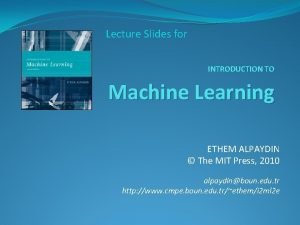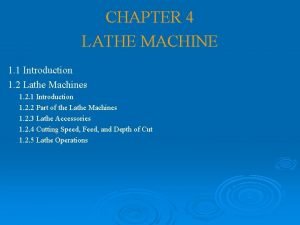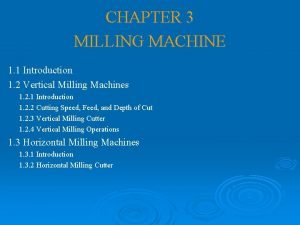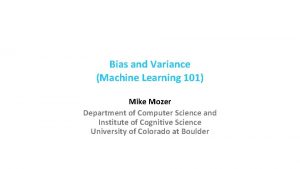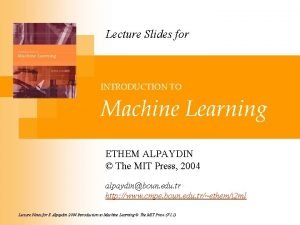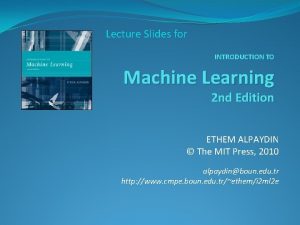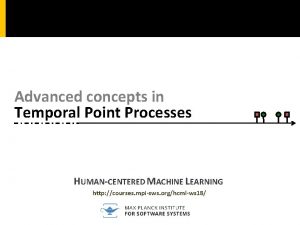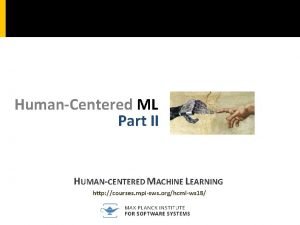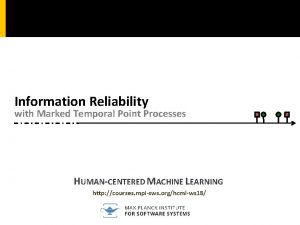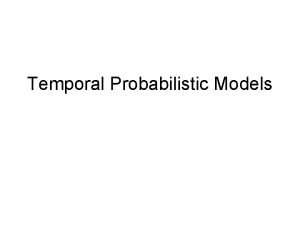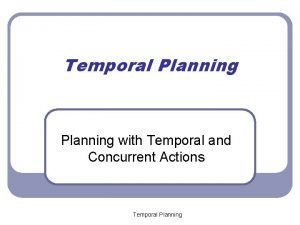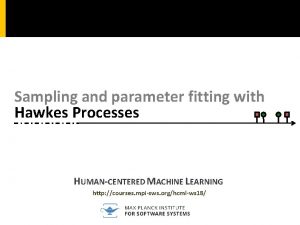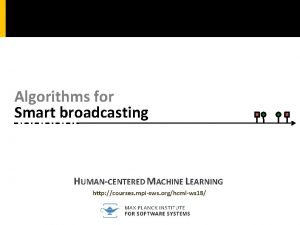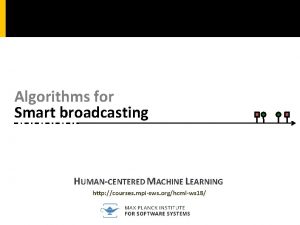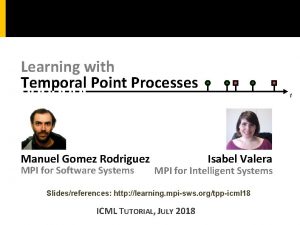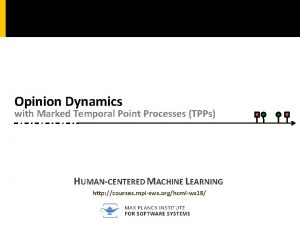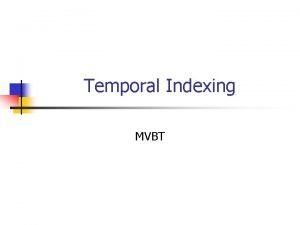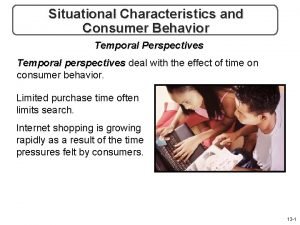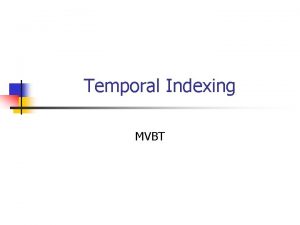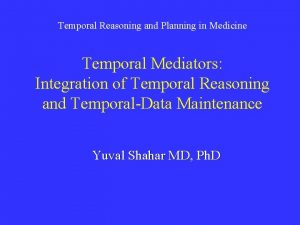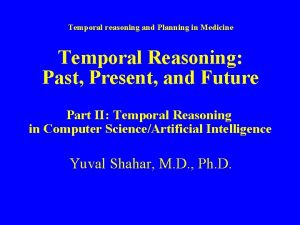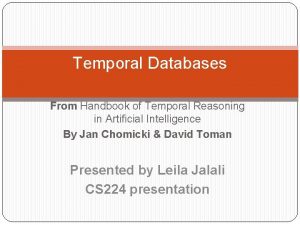Introduction to Temporal Point Processes II HUMANCENTERED MACHINE


















- Slides: 18

Introduction to Temporal Point Processes (II) HUMAN-CENTERED MACHINE LEARNING http: //courses. mpi-sws. org/hcml-ws 18/

Temporal Point Processes: Basic building blocks 2

Poisson process time Intensity of a Poisson process Observations: 1. Intensity independent of history 2. Uniformly random occurrence 3. Time interval follows exponential distribution 3

Fitting a Poisson from (historical) timeline time Maximum likelihood 4

Sampling from a Poisson process time We would like to sample: We sample using inversion sampling: 5

Inhomogeneous Poisson process time Intensity of an inhomogeneous Poisson process Observations: 1. Intensity independent of history 6

Fitting an inhomogeneous Poisson time Maximum likelihood Design such that max. likelihood is convex (and use CVX)

Nonparametric inhomogeneous Poisson process Positive combination of (Gaussian) RFB kernels: 8

Sampling from an inhomogeneous Poisson time Thinning procedure (similar to rejection sampling): 1. Sample from Poisson process with intensity Inversion sampling 2. Generate 3. Keep the sample if Keep sample with prob.

Terminating (or survival) process time Intensity of a terminating (or survival) process Observations: 1. Limited number of occurrences 10

Self-exciting (or Hawkes) process time History, Triggering kernel Intensity of self-exciting (or Hawkes) process: Observations: 1. Clustered (or bursty) occurrence of events 2. Intensity is stochastic and history dependent 11

Fitting a Hawkes process from a recorded timeline time CV X! (u se The max. likelihood is jointly convex in and ) Maximum likelihood

Sampling from a Hawkes process time Thinning procedure (similar to rejection sampling): 1. Sample from Poisson process with intensity Inversion sampling 2. Generate 3. Keep the sample if Keep sample with prob. 13

Summary Building blocks to represent different dynamic processes: Poisson processes: Inhomogeneous Poisson processes: We know how to fit them andpoint how to sample from them Terminating processes: Self-exciting point processes: 14

Temporal Point Processes: Superposition 15

Superposition of processes time Sample each intensity + take minimum = Additive intensity 16

Mutually exciting process time Bob History Christine time History Clustered occurrence affected by neighbors 17

Mutually exciting terminating process time Bob Christine time History Clustered occurrence affected by neighbors 18
 Concurrent processes are processes that
Concurrent processes are processes that Introduction to manufacturing processes
Introduction to manufacturing processes Introduction to stochastic processes pdf
Introduction to stochastic processes pdf Finite state machine vending machine example
Finite state machine vending machine example Mealy and moore sequential circuits
Mealy and moore sequential circuits Mealy to moore conversion
Mealy to moore conversion Chapter 10 energy, work and simple machines answer key
Chapter 10 energy, work and simple machines answer key Examples of screw
Examples of screw Introduction to machine learning ethem alpaydin
Introduction to machine learning ethem alpaydin What is unsupervised learning algorithm
What is unsupervised learning algorithm Andrew ng introduction to machine learning
Andrew ng introduction to machine learning Lathe machine introduction
Lathe machine introduction Feed rate and depth of cut
Feed rate and depth of cut Mike mozer
Mike mozer Introduction to machine learning ethem alpaydin
Introduction to machine learning ethem alpaydin Machine learning slides
Machine learning slides Introduction of lathe machine
Introduction of lathe machine Atm machine wattage
Atm machine wattage Introduction to machine learning slides
Introduction to machine learning slides








